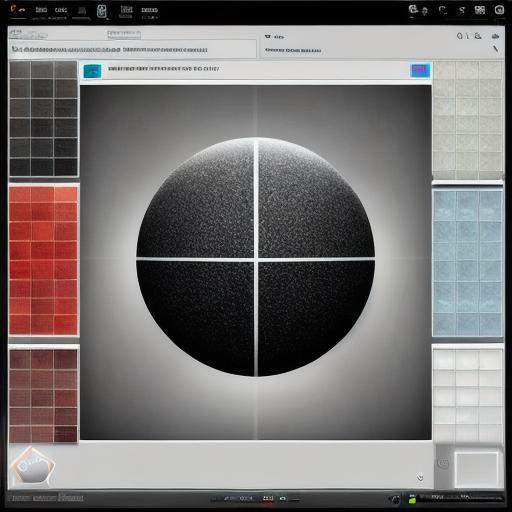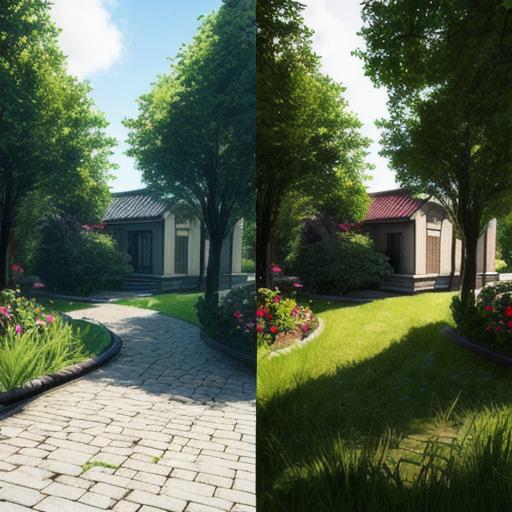The world of game development is a vast and ever-changing landscape, with new tools and technologies emerging all the time to help developers create high-quality games. From 2D platformers to immersive virtual reality experiences, there are countless different types of games that can be created using various game development tools. But with so many options available, how do you choose the best tool for your needs?
In this comprehensive guide, we will explore the top game development tools on the market and discuss their key features, benefits, and drawbacks. We’ll also look at real-world examples of successful games created using these tools to help you make an informed decision about which tool is right for you. So, without further ado, let’s dive into the world of game development and find out which tools are worth your time and effort.
Unity: The All-Purpose Game Development Tool
Overview
Unity is one of the most popular game development tools on the market, with a massive user base that spans from indie developers to large corporations. It supports both 2D and 3D game creation, as well as virtual reality and augmented reality experiences. Unity uses C as its primary programming language, making it easy for developers with experience in other programming languages to get started.
Key Features
Unity offers a wide range of features that make it an excellent choice for game development. Some of these features include:
- Cross-platform compatibility: Unity supports a wide range of platforms, including Windows, macOS, Linux, iOS, Android, and web browsers. This makes it easy to create games that can run on multiple devices.
- Assets store: Unity has an extensive library of assets, including pre-made 3D models, animations, and sound effects. These assets can be used to speed up development and help create high-quality games without the need for extensive art or sound design skills.
- Real-time rendering: Unity uses real-time rendering, which allows developers to see how their game will look on the final platform as they develop it. This can save time and reduce the number of iterations required to achieve the desired look and feel.
-
Scriptable objects: Unity allows developers to create scriptable objects that can be used to control various aspects of a game, such as enemy behavior or player interactions. This makes it easy to add complex logic to a game without the need for extensive coding.
Real-World Examples
Unity has been used to create some of the most successful games in recent years, including:
- Tetris: The classic puzzle game was reimagined using Unity in 2017, resulting in a visually stunning and immersive experience that paid homage to the original while also adding new features.
- Pikachu: The beloved Pokemon character was brought to life in a virtual reality experience using Unity. Players could explore the world of Pikachu and interact with various characters from the franchise.
-
The Last of Us: The critically acclaimed video game was remastered using Unity, resulting in improved graphics and performance on modern consoles.
Benefits and Drawbacks
Unity is a versatile tool that can be used for a wide range of game development projects. It offers cross-platform compatibility, a library of assets, real-time rendering, and scriptable objects, making it easy to create high-quality games quickly. However, Unity can be complex to learn, and the learning curve may be steep for beginners. Additionally, Unity’s performance can sometimes suffer on less powerful hardware.
Alternatives
Some popular alternatives to Unity include Unreal Engine, CryEngine, and Godot. Each of these tools has its own strengths and weaknesses, so it’s important to do your research and choose the tool that best suits your needs and skill level.
Unreal Engine: The Powerhouse of Game Development
Overview
Unreal Engine is a popular game development tool that is often used for creating high-quality, visually stunning games. It supports both 2D and 3D game creation, as well as virtual reality and augmented reality experiences. Unreal Engine uses C++ or Blueprints as its primary programming languages.
Key Features
Unreal Engine offers a wide range of features that make it an excellent choice for game development. Some of these features include:
- Real-time rendering: Unreal Engine uses real-time rendering, which allows developers to see how their game will look on the final platform as they develop it. This can save time and reduce the number of iterations required to achieve the desired look and feel.
- Dynamic lighting: Unreal Engine has a powerful dynamic lighting system that allows developers to create complex and realistic lighting effects, such as shadows and reflections.

- Physics simulation: Unreal Engine has a robust physics simulation system that can be used to create realistic interactions between objects in a game.
-
Blueprints visual scripting: Blueprints is a visual scripting system that allows developers to create complex logic without the need for extensive coding knowledge. This makes it easy for beginners to get started with game development.
Real-World Examples
Unreal Engine has been used to create some of the most impressive games in recent years, including:
- Fortnite: The hugely popular battle royale game was built using Unreal Engine, resulting in a visually stunning and immersive experience that has captured millions of players worldwide.
- Samaritan: A virtual reality experience that takes place in a post-apocalyptic world, Samaritan was created using Unreal Engine and showcases the tool’s powerful visual effects and physics simulation capabilities.
-
The Witcher 3: The highly acclaimed video game was created using Unreal Engine, resulting in stunning graphics and realistic gameplay on modern consoles.
Benefits and Drawbacks
Unreal Engine is a powerful tool that offers real-time rendering, dynamic lighting, physics simulation, and Blueprints visual scripting. It’s a great choice for developers who want to create visually stunning games with complex interactions between objects. However, Unreal Engine can be difficult to learn, particularly for beginners, and it requires more resources than some other tools to run smoothly.
Alternatives
Some popular alternatives to Unreal Engine include Unity, CryEngine, and Godot. Each of these tools has its own strengths and weaknesses, so it’s important to do your research and choose the tool that best suits your needs and skill level.
CryEngine: The Performance Powerhouse
Overview
CryEngine is a game development tool that is known for its high-performance graphics and real-time rendering capabilities. It supports both 2D and 3D game creation, as well as virtual reality and augmented reality experiences. CryEngine uses C++ as its primary programming language.
Key Features
CryEngine offers a wide range of features that make it an excellent choice for game development. Some of these features include:
- Real-time rendering: CryEngine uses real-time rendering, which allows developers to see how their game will look on the final platform as they develop it. This can save time and reduce the number of iterations required to achieve the desired look and feel.
- Physics simulation: CryEngine has a robust physics simulation system that can be used to create realistic interactions between objects in a game.
- Visual scripting: CryEngine includes a visual scripting system that allows developers to create complex logic without the need for extensive coding knowledge. This makes it easy for beginners to get started with game development.
-
High-performance graphics: CryEngine is known for its high-performance graphics, which can result in stunning visuals on modern consoles and PCs.
Real-World Examples
CryEngine has been used to create some of the most impressive games in recent years, including:
- Far Cry 5: The popular open-world game was created using CryEngine, resulting in stunning graphics and immersive gameplay on modern consoles and PCs.
- Gears 5: The latest entry in the Gears of War franchise was created using CryEngine, resulting in improved performance and visuals on modern consoles.
-
The Mediator: A virtual reality experience that takes place in a futuristic world, The Mediator was created using CryEngine and showcases the tool’s high-performance graphics and physics simulation capabilities.
Benefits and Drawbacks
CryEngine is a powerful tool that offers real-time rendering, physics simulation, visual scripting, and high-performance graphics. It’s a great choice for developers who want to create visually stunning games with realistic gameplay on modern consoles and PCs. However, CryEngine can be complex to learn, particularly for beginners, and it requires more resources than some other tools to run smoothly.
Alternatives
Some popular alternatives to CryEngine include Unreal Engine, Unity, and Godot. Each of these tools has its own strengths and weaknesses, so it’s important to do your research and choose the tool that best suits your needs and skill level.
Godot: The Open-Source Wonder
Overview
Godot is an open-source game development tool that is known for its simplicity and ease of use. It supports both 2D and 3D game creation, as well as virtual reality and augmented reality experiences. Godot uses GDScript as its primary programming language.
Key Features
Godot offers a wide range of features that make it an excellent choice for game development. Some of these features include:
- Real-time rendering: Godot uses real-time rendering, which allows developers to see how their game will look on the final platform as they develop it. This can save time and reduce the number of iterations required to achieve the desired look and feel.
- Physics simulation: Godot has a robust physics simulation system that can be used to create realistic interactions between objects in a game.
- Visual scripting: Godot includes a visual scripting system that allows developers to create complex logic without the need for extensive coding knowledge. This makes it easy for beginners to get started with game development.
-
Open-source: Godot is an open-source tool, which means that it’s free to use and modify. This can make it a great choice for small teams or individuals who want more control over their project.
Real-World Examples

Godot has been used to create some impressive games in recent years, including:
- Minecraft: The popular block-building game was created using Godot, resulting in improved performance and graphics on modern consoles and PCs.
- Hector Badge Engine 2: A 2D platformer game that was created using Godot, it showcases the tool’s ease of use and visual scripting capabilities.
-
Godot Community Games Jam: A series of game jams that are held regularly to showcase games created using Godot. These events are a great way to see what can be achieved with this open-source tool.
Benefits and Drawbacks
Godot is an open-source tool that offers real-time rendering, physics simulation, visual scripting, and ease of use. It’s a great choice for developers who want to create games quickly and easily, without the need for extensive coding knowledge. However, Godot can be less powerful than some other tools when it comes to graphics and performance, and its community support may not be as strong as some other tools.
Alternatives
Some popular alternatives to Godot include Unity, Unreal Engine, and CryEngine. Each of these tools has its own strengths and weaknesses, so it’s important to do your research and choose the tool that best suits your needs and skill level.
Summary
When it comes to game development, there are many different tools to choose from. Unity, Unreal Engine, CryEngine, and Godot are all popular options that offer a range of features and capabilities. The right tool for you will depend on your specific needs and skill level. It’s important to do your research and try out different tools before making a decision to ensure that you choose the best one for your project.



